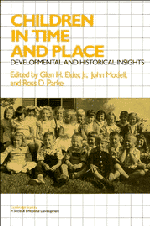Part IV - The cross-disciplinary collaboration
Published online by Cambridge University Press: 03 May 2011
Summary
Interdisciplinarity is a means of solving problems and answering questions that cannot be satisfactorily addressed using single methods or approaches.
Julie T. Klein (1990, p. 196)Up to this point, we have presented the end products of a cross-disciplinary collaboration that began in the mid-1980s. This collaboration, we believe, offers valuable insights into the nature of cross-disciplinary work. If joint efforts of this kind are the answer to investigative needs when expertise is required from different fields, it is important to give thought to ways of building cross-disciplinary teams.
Our first step in this direction is to follow the path of our workshop enterprise (see chapter 8), beginning with the New York City meeting of historians and developmentalists and concluding with the Belmont Center Conference and its written papers. The New York meeting provided members of each discipline an opportunity to know each other. The historians presented models of social change in the twentieth century, and the developmentalists discussed various behavioral outcomes. Out of this meeting emerged a plan to team members from each discipline to work on specific research problems. The Belmont Conference critically examined manuscripts based on these collaborations, resulting eventually in the present volume. Wherever possible, we bring the exact words and reflections of the participants into the text in an effort to convey the different perspectives and interpretations.
The Belmont Conference had much to say about issues of method and approach, prompted, in part, by a thoughtful presentation, “The Elusive Historical Child: Ways of Knowing the Child of History and Psychology” (chapter 9).
- Type
- Chapter
- Information
- Children in Time and PlaceDevelopmental and Historical Insights, pp. 171 - 172Publisher: Cambridge University PressPrint publication year: 1993

